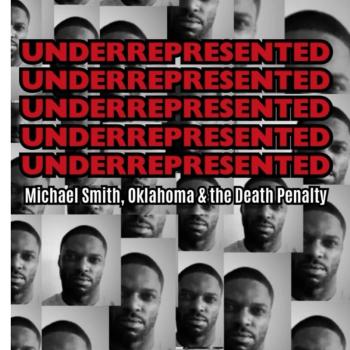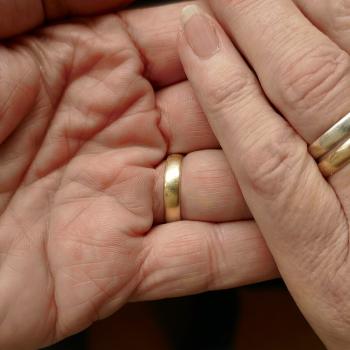Today I want to dive into a study brought to my attention by a usually very sensible health and fitness blogger, but who erroneously interpreted the results as evidence “long covid” might be primarily psychological in origin.
Here’s the study: “Psychophysiologic symptom relief therapy (PSRT) for post-acute sequelae of COVID-19: a non-randomized interventional study.” Click on the “full text” tab to read it for free (you can also download the PDF if you’d like to save a copy). It’s a pre-print, and that may explain a few things.
I want to run through it because the study tackles a problem that everyone with chronic illness deals with: To what extent am I just turning into a hypochondriac here?
As I’ll explain below, the study itself is quite generalizable, as it’s not just a long covid study. It’s really a study of patients with chronic illness of unknown origin.
The Mental Game is Real
I have a friend whose wife died of a particularly miserable cancer. While she was in remission, though, he shared with me the constant head-game they dealt with: Every time she felt a new ache or pain, she wondered, “Is that the cancer coming back?” Eventually it was the cancer metastasizing, but that doesn’t mean every single joint pain or stomach cramp in the year leading up to her final illness was in fact a new tumor wreaking its havoc. Sometimes, even when you’re dying of cancer, you just have a sore knee.
With long covid, some of the most pernicious symptoms fall into the “dysautonomia” umbrella, which are notoriously hard to diagnose and treat. For an example of how crazy-making this is, here’s my 2016 description of what was going on at that time: “Dysautonomia Awareness: You’re Not Insane, You Just Feel That Way.”
Sometimes it is very easy to know that your autonomic nervous system is going off the rails all on its own, like that month where I woke up every morning at 4AM with allergy symptoms, blew my nose for an hour, and then went back to bed spontaneously cured. No one is only allergic to their bedding one hour a night. Even if sneeze-inducing panic is a thing (is it?), how exactly are you panicking when you were sleeping peacefully all night long, and you don’t even realize the runny nose is weird until it just keeps happening at the same hour of the early morning every day for a month? (And then goes away on its own, because you have a relapsing-and-remitting disease, which is much nicer than symptoms not going away, so props for that.) That’s an example of being able to easily tell what’s in your head and what’s not.
In contrast, if you’re out for a normal walk and start to feel short of breath, good luck staying calm through that one. Once your panting and your inappropriately racing heart come to your attention, I don’t know really know how you don’t think about it. Honestly all you can do is make sure you aren’t about to drop dead and then calmly walk home, lay down, and see if you continue to be hit out of the blue with these symptoms in the future, at times when you aren’t thinking about it, because you just forgot.
The study we’re going to look at specifically addressed the problem of: Am I really sick, or am I just freaking out? The results are pretty informative.
What is “Psychophysiologic Response?”
The study authors note that for a subset of long covid patients, finding a physical cause of dysautonomia and pain symptoms remains elusive. They ask the question, is this psychophysiologic?
What that means is that you have a psychological situation that is causing a genuine physical symptom. They give the example of blushing: It’s caused by an emotional state (embarrassment), but it is a measurable, observable physical symptom. If you sweat because you’re nervous, faint at the sight of blood, or get a blood pressure spike at the doctor’s office because of “white coat syndrome,” that’s your autonomic nervous responding to a mental state.
It’s important to parse out what is happening in these situations, because the treatment for, say, chronic high blood pressure is different than the treatment for anxiety-induced high blood pressure. Both need to be treated, but they need to be managed in different ways because they are not the same illness.
Narrowing Down the Study Group
In order to answer this question, the study authors had to pare down their study group very aggressively. About 90% of the people who applied to participate were ruled out. The three general reasons were:
- Did not have a positive confirmation of prior covid infection. Obviously if you are attempting to understand “long covid” then that’s a good one. However, see my notes below about the limitations on this parameter.
- Had a confounding health status, whether related to covid (such as detectable organ damage) or otherwise (diabetes, over age 60 or under 18, known psyche co-morbidity, etc.). This is logical. If you’re trying to tease out the purely psychological element of someone’s chronic illness, you need to be as clear as possible about what is what.
- Did not express openness to exploring a mind-body connection, or else had some other reason they were unable to complete the program.
Let’s get our heads around this last criteria, because it is very important for understanding the limits of the study.
Who Can Benefit from Psychotherapy for Chronic Illness?
I think it goes without saying that if you aren’t open to the possibility that a psychological intervention will help you, that therapy is unlikely to make you better, even if your problem is purely psychological. Unlike popping a pill, where your body will respond regardless of whether you believe the medication will work or not, psychological therapy requires your active cooperation. Mentally you have to be willing to do your part.
So this is a necessary part of the study design. You could do future studies with additional control groups, but for pilot research, this criteria makes sense. As a result, though, it eliminates a major category of long covid patients who are critically important to unveiling the physical causes of the disease.
Who are the Self-Treated Long Covid Psyche Patients?
What has caught my attention since the emergence of “long covid” accounts in mid-2020 are the stories from physicians, academics, and competitive athletes. These are people who, by definition, are extremely motivated — the absolute masters of pushing through it.
You simply cannot become an MD, get on the tenure track, or place at the top in your sport if you’re the kind of person whose response to life’s serious challenges is to retreat, reconsider, and just give up.
As a result, patient accounts from these subgroups nearly universally include a long, intense period of drawing on every psychological trick in their book for powering through anxiety-states. When these patients say, “No, it’s definitely not in my head,” they know.
These are people who simply won’t stand for having their ambitions checked. Not by you, not by the committee, certainly not by any damn disease. Residual symptoms in this group are the result of some kind of intractable physical illness, even if it is not yet possible (because the medical technology hasn’t been developed yet) to detect the physical cause of those symptoms.
Eliminating these patients from the study group helps us better understand to what extent a psychophysiological response might be in play for more-normal people — those (presumably) long covid patients who are legitimately still asking the question about how much of what they are feeling is just anxiety taking over their life.
Measuring Your Mind-Body Experience
The study’s main outcome measure is scoring on a questionnaire called the “Somatic Symptom Scale-8.” As described by the authors:
The SSS-8 is an eight item scale in which participants rank how bothered they have been by eight separate groups of symptoms over the past week on a scale of 0-4 from “not at all” to “very much” (19). Results from the SSS-8 are summed to an overall score that ranges from 0 to 32. Scoring of the SSS-8 is categorized as follows: no to minimal (0-3 points), low (4-7 points), medium (8-11 points), high (12-15 points), and very high (16-32 points) somatic symptom burden (27).
You can read about the SSS-8 and see a PDF version of the questionnaire here. I’ll discuss this more below, but for the moment notice that the one big question is how much are you bothered by . . .? This is an important measure for a psychological intervention.
Psyche Holds Its Own Against Big Pharma
For the study, the twenty-three patients who met the criteria evaluated themselves on the SSS-8 at intervals throughout the treatment period. They also did an array of other evaluations, but I’m initially going to focus on the SSS-8 data, because that was the primary outcome being assessed. Looking at that data gets us some good answers. By all means dig through the tables for other insights.
The treatment included regular classes that covered both education about stress-responses and exercises designed specifically to treat stress-induced physical symptoms. I’m not going to copy and paste the whole description, but it was quite a thorough intervention, and patients reported some specific experiences of realizing they did have some physical symptoms that were psychologically-induced. (Just go read the “intervention” section.)
Let’s look at the numbers, and these are lifted straight from the text and tables. The authors tell us:
- The overall population mean SSS-8 score is 3.2. That’s just at the top of the “no to minimal” category. The study authors set as a goal to try to get the study participants down to that level — down to being no more bothered by their symptoms than is typical for people generally.
- The participants began the study with a mean SSS-8 score of 20.8. That’s in the “very high” category of being bothered by pain and other symptoms.
- Just four weeks in to the psychological intervention, participants’ SSS-8 scores were down to a mean of 11.7, the “medium” category.
This is an impressive improvement. If a new medication provided this much relief, and without any dangerous side effects, you’d be crazy not to take it.
However, and this is where the study gets very helpful in a different way, that psyche treatment only gets you so far in dealing with chronic illness.
Better is Good, But It Isn’t the Same as Cured
At weeks 8 and 13 of the study, participants did show continued improvement, but the gains were minimal. The average SSS-8 dropped one more point by week 8 and yet another point by week 13, but at a mean score of 9.3, the average participant was still in the “medium” category of how bothered they were by their symptoms. This is much, much better than where they began, but nowhere close to the stated goal of getting down to the “low” category.
While it’s possible that this flatter downward trend would continue indefinitely with on-going treatment, it seems more likely that the study has successfully identified a genuine plateau. If you check the raw scores on the secondary evaluations (pain, fatigue, etc.), the pattern is similar for many (but not all, see below) measures: A rapid drop in patient discomfort at the four-week mark, and then relatively few gains after.
A reasonable conclusion is that for patients who have intractable physical symptoms not easily explained by an obvious disease course, and who have not yet ruled out psychological origins for their symptoms, treating for stress-response can dramatically improve patients’ well-being even though it cannot eliminate any purely physical side of the disease.
What it Means to be Bothered
One of the most interesting secondary measures were the assemblage of pain-related evaluations.
- “Average Pain” started at a mean score of 5.4, dropped to 3.8 by week four, and held steady at 3.8 and then 3.3.
- “Pain Intensity” started at a mean score of 5.1, dropped to 3.3 by week four, and then again stalled at the plateau with only slight improvements at 3.1 and 2.7.
- In contrast, “Pain Interference” showed a stronger continued drop: Mean score of 43 at week 0, down to 20.5 by week four, and then continuing the slide to 14.5 and then to 10 by the study’s end.
This is a great example of how psychological reframing can make the same pain less bothersome, even though you are still in the same amount of pain. You can read about the Brief Pain Inventory here.
The “interference” section of the questionnaire asks patients to rate not how much pain they are feeling (covered in the other sections of the BPI) but how much that pain is keeping them from doing what they want to do. Can you sleep? Socialize? Work? Get around? Enjoy life?
For the same amount of pain — again note that after the first four weeks, average pain and pain intensity held fairly steady — psychological coping tools can help you:
- Adjust your expectations so that you aren’t as depressed or overwhelmed by your chronic pain;
- Learn relaxation or other palliative techniques to assist in falling asleep, since sleep-deprivation drives pain and other symptoms;
- Use constructive work-arounds to accomplish your goals without aggravating your pain (example: use a jar opener rather than wrecking your arthritic hands);
- Learn pacing and self-care strategies to prevent exacerbations;
- Identify when it’s okay to just power through pain, or outright ignore it, because nothing bad is going to happen, it’s just there;
- Eliminate self-sabotaging coping mechanisms;
- Set boundaries in toxic relationships that undermine your physical or mental health;
- Treat yourself to special Jedi mind-tricks to ignore the pain and just do what you need to do.
All of this can make you far less bothered by your pain, even when no amount of psychology can eliminate the fact that you have a painful disease process, sorry, too bad.
Probably not in the study, but it’s also an important psyche technique: Learning when and how to use pain-relieving medications for best overall effect. It’s a skill.
The Long Covid Study that Wasn’t About Long Covid
What I find most intriguing about this study is that we have no idea whether the participants actually have long covid. We know that they had a prior covid infection, and that they have something wrong with them. Whether they have what will one day be easily diagnosed as “true long covid” or whether they are people with random other difficult-to-diagnose disorders remains a mystery. That’s the nature of the study design and the current state of diagnostic technology.
I think, therefore, that the results of this initial pilot intervention are worth considering for any chronic illness.
And that, in turn, leads to a follow-on I’d like to see in this study, but which can be tried at home any time.
Deconditioning vs. Fitness Ceiling
The in-study assessment of fatigue follows the same improvement curve as most of the other measures: A sharp improvement at first, and then a more or less steady-state thereafter. In contrast, the assessment of dyspnea (shortness of breath) shows the initial sharp improvement at the four-week mark, but then a slower rate of significant continued improvement over the remaining weeks of the study.
Both of these measures are important proxies for answering a common question with protracted chronic illness: To what extent is deconditioning the cause of exercise intolerance?
Do you have no stamina because you can’t exercise, or because you don’t exercise?
As I mentioned here, when I first developed heart-attack levels of shortness of breath that couldn’t be explained by any obvious heart or lung condition, I had medical professionals attempt to tell me, with a straight face, that I had somehow deconditioned from running up and down a snow covered hill for hours at a time to being able unable to walk a quarter mile on flat ground. In two weeks?
That’s not how that works.
But in the long game of chronic illness, deconditioning does become the on-going nemesis. Therefore I would love for a replicated version of this current study to tack on a second 14-week follow-on intervention to specifically parse out that question.
Objective Counterparts to the “Bothered By” Scale
Dyspnea, or shortness of breath, is a self-perceived, somewhat subjective measure. To an extent other people can see you panting and gasping for breath, but to be honest I’ve never known a pulmonology tech who had that level of perceptiveness. I’m sure they are out there.
In the absence of identifiable lung disease, however, heart rate is an objective measure of physical effort that is easily tracked using an over-the-counter fitness tracker.
Likewise, whereas perceived fatigue is a subjective measure, sleep duration and daily step count are both objective, easily-measurable ways to assess how active you are able to be, and how tired you are as a result.
For a finer-grain detail on the question of fatigue, you could also sample, at intervals, measures like how much of the day was spent just plain lying there, or how long you could be up and active before you needed to rest. (You wouldn’t want to do this every day because that level of recordkeeping is, um, exhausting.)
It would be good to track this information in a general way (collecting the data from the fitness watch and possibly doing some sample-day detailed journaling) during the initial 14-week psychotherapy intervention, to establish an initial baseline level of fitness and stamina.
If this were my study (whether in the lab or self-treating at home), I would absolutely work on the psychological treatment first, however. You need to overcome any exertion-related anxiety so that you are confident of your ability to move on to attempted reconditioning.
This confidence includes the self-assurance that when you feel exhausted or short of breath, it is indeed your body begging for rest, not you psyching yourself out. This pre-print study appears to have done a good job of cutting through that noise and getting the participants to a stable physical state.
UPDATE 3/16/2023: If you are someone experiencing a “post-exertional malaise” (PEM) type syndrome, or tasked with treating it, take a look at this: Recovery from Exercise in Persons with Myalgic Encephalomyelitis/Chronic Fatigue Syndrome (ME/CFS). The authors are frank about the limitations of this study, but I think it is clear that erring on the side of caution is warranted for patients showing signs of impaired exercise-recovery.
This is fairly distinct from other kinds of illness-induced fatigue that reduce stamina but don’t involve PEM. What follows from here is based on what works with non-PEM fatigue. Therefore, given the growing consensus that a significant portion of long-covid patients are experiencing PEM as described by the CDC in ME/CFS, I would consider carefully this advice from the CDC:
Patients need to determine their individual limits for mental and physical activity, and plan activity and rest to stay within these limits. Some patients and healthcare providers refer to staying within these limits as staying within the “energy envelope.” Limitations may be different for each patient. Keeping individual activity and symptom diaries may be helpful to patients in identifying their personal limitations, especially early on in clinical care. Healthcare providers need to keep in mind that when patients with ME/CFS exceed their individual capacities, PEM and serious deterioration of function may result. In general, patients should not push themselves beyond their capacities as this may exacerbate the symptoms and trigger PEM.
You would want to rule out PEM quite firmly before proceeding with self-experiments on pushing your fitness ceiling as described below.
I’ll add here, with respect to step one below, that one of the hallmarks of ME/CFS is the combination of crushing fatigue and poor sleep. In contrast, people (even very sick people) with normal fatigue responses sleep well when they have exercised to a comfortable capacity (however much or little that is), and wake feeling comparatively rested and restored.
Final note with this update: Edits on this post will automatically close (by the software, not me) after six months. So if you are reading this after that point, please do your research to see if new info (or new-to-me info) contradicts anything I suggest here. I’m not your doctor and never will be.
Finding the Fitness Ceiling
From that stable physical state, if I were conducting a study my psyche intervention would shift to education on basic conditioning concepts like pacing, sleep hygiene, and heart-rate zones (with continued review of the mental health skills developed in phase 1).
My first four weeks of phase 2 would focus only on establishing a reliable daily activity level: How many steps can you fit in to your day and hit that sweet spot of sleeping well (however that happens for you), but without ending up exhausted and unable to maintain the pace through the days or weeks that follow?
This is a largely observational process of looking at your step count each day and adjusting for slightly more activity the following day if you are restless from lack of activity, and reducing your step count target if needed because you experience an increase in exhaustion.
Once you have a reliable daily activity level, which will usually require lifestyle adaptations to accomplish a stable daily step count, then you can explore whether this level of stamina is the result of a fitness ceiling.
All you do is nudge up the daily step count target by 10% (5% if you are being conservative) and attempt to hold. If reconditioning is possible, then you will experience mild positive signs of exercise-adaptation (sleep just a little better, maybe some mild muscle soreness that self-resolves, likely feel some sense of exertion during the extended activity), but it won’t crush you. You’ll be able to maintain it and soon you’ll be maintaining that improvement as if it were totally normal.
[–> To hit your target reliably, what you do is go about your daily life, and in the early evening take a look at where your step count is. If it’s low, either go for a walk or do random chores to nudge it up to almost-there. You’re still gonna use a few more steps getting ready for bed and putting the cat out and all that.
And, from the other direction, if you know you have a high-step day coming up, you have to do all the prep for that day in the lead-up. I.e. pack your bags one day, clean the house over the next three days, and then go on that trip. Or: inventory your groceries today, go to the store tomorrow, put away only perishables when you get home, leave the non-perishables in the car to put away the day-after. Learning to estimate how many steps you’re going to use is part of the skill set you are building.
If you are step-limited due to an injury or disability, then you substitute alternative measures of activity. I’m using steps, but you might have to develop a different exercise metric if you aren’t much of a stepping-person.]
In contrast, if you attempt to nudge up your average daily steps from baseline and you simply can’t do so because of your underlying disease process? You will know. Oh believe me: You. will. know.
That’s the fitness ceiling. Everyone has one. Ironman triathletes, hyperactive toddlers, normal people with or without chronic illness . . . everyone has an amount of daily exertion they can maintain, beyond which they simply must rest and recover because the human body can only do so much and then it’s done.
The Fitness Ceiling is Not Static
No matter how healthy you are, your maximum daily exertion is going to fluctuate. With chronic illness, these fluctuations can run either direction, and move quite dramatically up or down in the case of a relapsing-and-remitting illness.
For everybody, incidents like fighting off an infection or grieving a significant loss will also impact your fitness ceiling; with chronic illness, these lows will tend to go lower and run longer.
There’s not much for it. You just identify what is happening, temporarily adjust your baseline down to as reliable of a steady-state as you can, and then nudge back upwards when it seems like you are doing better.
Psyche vs. Sick
I’ve spent so much time responding to this study for several reasons. First and foremost is because I was seeing people who should know better dramatically misinterpreting what the study does and doesn’t say. I hope I’ve cleared that up.
Secondly, I think this research provides some valuable insights into the benefits to be gained from working through the mental game of any chronic illness. This is especially so for undiagnosed chronic illness, which is what the study participants all had, and which brings a distinctive set of psychological challenges.
And finally, I do think it’s important that psychological intervention not stop with only the benefits that emotional coping strategies can bring, but instead move on to supporting a carefully-planned physical trial of how much fitness can, or cannot, be recovered once the individual has developed a stronger set of coping skills for dealing with their on-going illness.
I think that physical trial does belong in the context of a supportive, psychologically healthy group or partner relationship, because the mental game in rehab is hard. The pressure of figuring out how to live your life when you can’t just live your life is intense and unremitting. The decision to discover your absolute physical limits and live just under that line takes serious mental toughness.
And in that regard, I think this study, properly interpreted, contains some useful insights for just about anyone in the position of needing to push yourself beyond what it feels like you can honestly do, but maybe you can and it’s worth a shot.

Jonathan’s Run Falls, photo by Hubert Stoffels, via Wikimedia, CC 2.0. You can come up with your own metaphor. I decided it was time for a nice waterfall photo, no deeper meaning from my end.


















